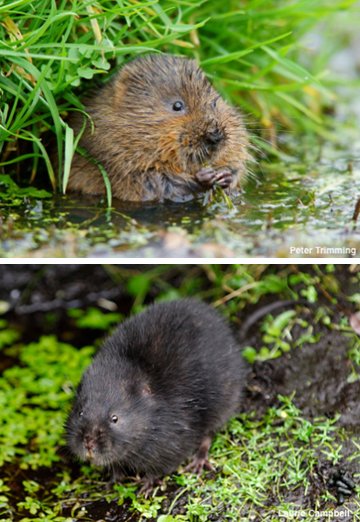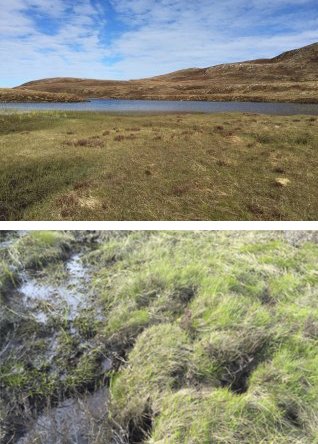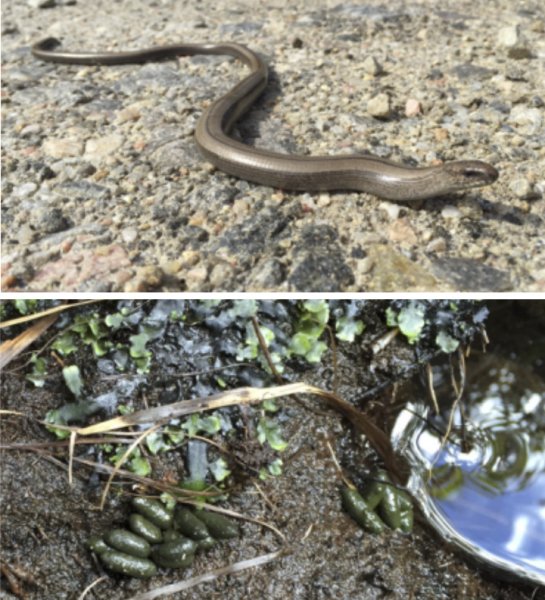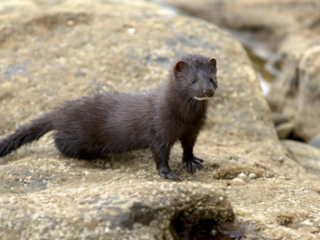A good week for water voles
 Forever immortalised as 'Ratty' in Wind in the Willows, water voles are one of our best loved creatures.
Forever immortalised as 'Ratty' in Wind in the Willows, water voles are one of our best loved creatures.
They're actually not rats at all but are, unsurprisingly from their name, members of the vole family, distinguished from rats by their blunt muzzle, short, often hidden ears, and furry tail. They make their home along slow-flowing water courses, where they create an extensive burrow system with entrances both above and below water. Water voles are normally exclusively vegetarian, feeding on a mixture of sedges, rushes and grasses. The fur is usually mid-red brown in colour, but upland individuals are frequently melanistic, with a black coat.
Sadly, water voles are one of our most endangered species. In the 1990s their numbers declined by almost 90%, due to habitat loss and predation from non-native American mink. Introduced into the wild through escapees from fur farms, mink quickly spread throughout the UK, wiping out our water vole population as they went. Today, water voles are locally extinct in many sites where they once flourished, and mink remain an ongoing threat.
We recently received an invitation to take part in the People's Trust for Endangered Species (PTES) National Water Vole Monitoring Scheme. The aim of this census is to provide baseline data on water vole populations at as many sites as possible across the UK. The sites will then be checked again on an annual basis, to provide information on how populations are changing over time.
 Last week, with the sun shining, I decided it was time to get out into the hills and check out the water vole populations at some of our key project sites: Dundreggan, the RSPB reserve at Corrimony, and beautiful Glen Strathfarrar. I was blessed with glorious weather, and the surveys didn't disappoint either.
Last week, with the sun shining, I decided it was time to get out into the hills and check out the water vole populations at some of our key project sites: Dundreggan, the RSPB reserve at Corrimony, and beautiful Glen Strathfarrar. I was blessed with glorious weather, and the surveys didn't disappoint either.
I started with Dundreggan first of all. Upland water voles tend to be found along slow-moving, non-rocky burns, or in wettish areas where the water is flowing underground. So it's fairly easy to look at a map and work out which areas are good potential sites to survey. Once I'd highlighted a few likely spots I headed up onto the higher ground and began my survey. The first two burns I investigated didn't show any signs of water voles but then I hit upon a boggy area around a high lochan. I could see as I headed towards it that it looked like perfect water vole habitat and, sure enough, there were burrows everywhere, plus one latrine (pile of droppings).
Water vole burrows are easy to identify: roundish holes about 7cm across. In lowland populations they will normally be in the banks of a watercourse but in the Highlands they are more often above ground, leading down to an underground water system. Under-snow tunnelling is also a common sign, where the bottom half of a tunnel can be seen after the snow has melted.
 Happily noting the presence of an active colony, I headed back down the hill, passing a lonely golden plover on my way, its plaintive cry drifting across the wind, and, further down, a real treat: 8 male black grouse.
Happily noting the presence of an active colony, I headed back down the hill, passing a lonely golden plover on my way, its plaintive cry drifting across the wind, and, further down, a real treat: 8 male black grouse.
The next day I headed back out, to Strathfarrar in the morning and then onto Corrimony in the afternoon. I was delighted to find water voles at both sites. Strathfarrar was a bumper batch – over 300 burrows! I also found 4 latrine sites, meaning that it is also an active colony. And it wasn't just water voles that I came across – along the main track a slow worm was out sunning itself, its beautiful coppery skin glistening in the morning light.
Sadly, water voles are one of our most endangered species. In the 1990s their numbers declined by almost 90%, due to habitat loss and predation from non-native American mink.
At Corrimony the dense vegetation made it hard to spot burrows but I still found a few stretching along a burn, one of which was in the bank, more akin to a lowland water vole burrow. The presence of 6 latrine sites showed that this colony was also active.
All in all it was a very successful couple of days surveying, and the data we collected will provide an important contribution to the National Water Vole Monitoring Scheme. It's really great to know that these charismatic endangered mammals are still present at our project sites and that American mink have not yet managed to eradicate these populations. We will continue to monitor these sites over the coming years, plus others in our Core Area, and encourage you to do the same. The monitoring scheme is designed for members of the public to take part, and the more streams, rivers and ponds that can be surveyed, the better. The surveys need to be carried out in May-early June, to show evidence of breeding, but data needs to be collected on an annual basis, so why not get ahead of the game and plan your sites for next year! You can find out more about the programme and how to register to take part here.
"As he sat on the grass and looked across the river, a dark hole in the bank opposite, just above the water's edge, caught his eye, and dreamily he fell to considering what a nice snug dwelling-place it would make for an animal with few wants and fond of a bijou riverside residence, above flood level and remote from voice and dust. As he gazed, something bright and small seemed to twinkle down in the heart of it, vanished, then twinkled once more like a tiny star. But it could hardly be a star in such an unlikely situation, and it was too glittering and small for a glow-worm. Then, as he looked, it winked at him, and so declared itself to be an eye; and a small face began gradually to grow up around it, like a frame around a picture.
A brown little face, with whiskers.
A grave round face, with the same twinkle in its eye that had first attracted his notice.
Small neat ears and thick silky hair.
It was the Water Rat!" (vole!!)
– Excerpt from The Wind in the Willows, by Kenneth Grahame.


